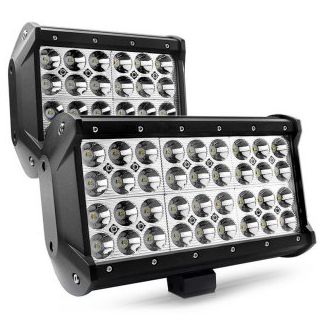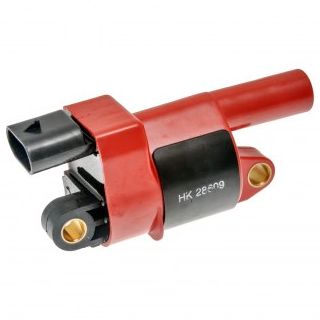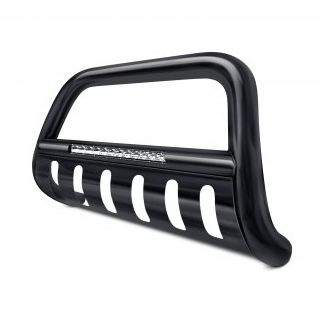- Traditional car ownership often includes hidden and ongoing costs that add up over time.
- Salary packaging allows employees to lease a car using pre-tax income, potentially reducing overall expenses.
- The best choice depends on your income, job stability, and how much you value convenience.
- Comparing both options side by side helps you make an informed decision tailored to your situation.
Almost everyone in Australia thinks of buying a car as a rate of passage. You can travel to work on your own time, bring your children to school with ease or go on fun driving trips thanks to your car. Sometimes, having freedom can be more difficult and more expensive than many people realize. Car ownership can really reduce the amount of income you have left over after paying expenses.
Enter salary packaging as the solution at this time. This is a term you might run across when talking about cars with someone at work or your accountant. At first, it might look like a privilege for bosses or government workers – but many will find it is available to more people than they guess.

This article examines how choosing salary packaging for a car can be much more cost-effective than acquiring one the traditional way. There’s more to it than numbers; you should find out what fits your way of living, helps you financially and points you toward future objectives.
What Traditional Car Ownership Really Costs
We can begin with the usual way – buying and owning your car without holding a loan. The costs of a car start to pile up before you actually get behind the wheel. The cost includes the sticker price, stamp duty, registration and even less thought of insurance. That’s only the start of what requires attention.
These expenses keep happening over time. Your monthly bills can rise because of fuel, servicing, tyre replacements, unexpected repairs and, even parking. There’s another aspect called depreciation. When you buy a car, the money you spend disappears quickly, so selling or turning in your car usually doesn’t give you any of that back.
One of the biggest problems I have with them? For most people, all of these expenses are nondeductible. Each part of your car is bought with your take-home pay which can slowly reduce what’s left of your earnings. The government won’t offer breaks on taxes unless your car is used for work.
None of this means owning your car with no remaining payments is always bad. Because you don’t sign a contract, you can sell or alter your car however you like. After several years have passed, the real total amount you spend on college can be much higher than you expect.
How Salary Packaging Works for Vehicles
We’ll address the topic of salary packaging next. Thanks to this plan, you can drive a vehicle leased by your employer using your pre-tax wages. If you sign a lease for a car, your employer handles the payments, which are deducted from your pay before you pay taxes.
Basically, it doesn’t get much easier than what you see here. There’s even more to the good sides of online shopping than just being easy. Since the costs are taken out before taxes, your taxable earnings go down. This means you may pay less in taxes even though you’re driving a regular, often brand-new vehicle.
One of the biggest reasons this option is gaining traction is the ease of working with established novated lease providers in Australia. These companies take the admin hassle off your plate, handling everything from vehicle sourcing to maintenance plans, insurance, and fuel cards – all bundled into a single, manageable deduction from your pay.
Another bonus? Flexibility. Many lease providers allow you to upgrade vehicles every few years, so you’re not stuck with an ageing car or surprise repair bills. And because everything’s rolled into a package, budgeting becomes much easier.
Of course, it’s not entirely hands-off. You’ll need to understand some rules, terms, and tax considerations, especially around fringe benefits tax (FBT). However, with the right provider and some planning, the structure can be a financial win, particularly for full-time employees in eligible roles.
Side-by-Side Comparison of Costs and Benefits
SIn other words, how does standard car ownership measure up against salary packaging? To the eye, they have the same basic goal of getting you from A to B. But if you take a close look at the numbers, you’ll see that there are some major differences.
For our example, let’s choose a car priced between $35,000 and $40,000. No matter the route you choose, covering the cost is all done with after-tax dollars, up-front or over time with payments. Adding up registration, servicing, insurance and fuel, you should expect to pay thousands each year. All the money you put into a car over time goes into it and when you want to change, you start at $0 again.
Things work differently with salary packaging. Before you pay taxes, your employer takes out your car payments and often, the lease company covers rego, servicing, fuel, tyres and comprehensive insurance. With most plans, your deductions are processed through your tax-free salary which helps you keep your finances simple. You don’t have to give a large single payment out of pocket whenever your car needs servicing.
We’ll think up a rough example to understand.
When you consider all the expenses over five years, having outright ownership could cost you more than $60,000.
The cost of living salary packaging might be less for you and the tax savings could boost how much you save each payday, depending on how much you earn.
It is also really convenient for businesses. No need to keep multiple bills – you’re only concerned with one and usually, you won’t have to consider reselling, trading or private sales. Some like the idea of having a new car every few years to ensure they’re driving something updated, secure and environmentally friendly.
Still, remember that you’re just leasing the car instead of owning it. People who like to alter or monetise their accounts might not like that. If your job changes and you have to leave, you might have to pay or fill out paperwork before you can go. All things considered, most Australians find that salary packaging is beneficial, as long as it is set up correctly.
Who Does Salary Packaging Work Best For
While salary packaging has clear advantages, it’s not a one-size-fits-all solution. Some people will benefit more than others, and it won’t be worth the complexity for some.
Generally, full-time employees working in medium to large organisations stand to gain the most. Many government departments, healthcare providers, and large private companies offer salary packaging options as part of their employee benefits. If your employer already works with a leasing provider, you’re in a good position to explore it further.
Salary packaging works best for people in mid-to-high income brackets. Why? Because the higher your taxable income is, the more potential you have for tax savings. If you’re earning a salary that puts you into a higher marginal tax rate, the reduction in taxable income from salary packaging can start to add up.
It’s also great for people who value convenience. The bundled, all-in-one model can be a significant plus if you’re not interested in hunting for the best mechanic, shopping around for insurance, or tracking your car-related expenses every month. For people who like to upgrade vehicles regularly, salary packaging often allows for a new car every few years, without the stress of selling or trade-ins.
But it’s not ideal for everyone. If you’re on a lower income, the tax benefits may not be significant enough to justify the structure. And if your employer doesn’t support salary packaging – or if you’re self-employed – the option might not even be available. It’s also important to consider your job stability. If you’re planning to change employers soon, you’ll want to understand what happens to your lease and what costs you’ll be up for.
The key is to weigh your priorities: financial savings, convenience, car flexibility, and job stability. Salary packaging can be a great fit – but only if it aligns with your circumstances.
How to Decide What’s Right for You
Choosing between traditional car ownership and salary packaging isn’t just a financial decision – it’s a lifestyle one too. The best option depends on your income, employer and your value of simplicity, flexibility, and long-term cost savings.
Start by looking at your current income and tax bracket. If you’re earning enough that a reduction in taxable income would make a real difference, salary packaging may offer substantial benefits. Then consider your employer. Do they already have arrangements with leasing providers? If not, they may be open to setting one up – but you’ll need to do some homework first.
Next, ask yourself how long you plan to stay in your job. Salary packaging contracts are often tied to your employment, and leaving your job mid-lease can come with added steps. Stability plays a significant role here. If you’re in a contract role or considering a career move, consider delaying this decision or looking for more flexible arrangements.
It also helps to be honest about how involved you want to be in car management. Owning your car might suit you if you enjoy shopping for insurance, managing maintenance, and negotiating repairs. But if you’d rather have it all rolled into one predictable monthly cost, the leasing route could be better.
When in doubt, talk to a financial adviser or salary packaging specialist. They can model different scenarios based on your specific numbers – tax rate, car type, lease terms – and help you see which option makes the most sense for your bottom line and lifestyle.
Conclusion
There’s no universal right answer. Traditional car ownership offers freedom and full control, while salary packaging can unlock financial advantages and unmatched convenience. The key is understanding the trade-offs and choosing the path that aligns with your goals.
If you’re weighing your options, don’t just look at the car’s sticker price. Consider the total cost, how you use your vehicle, and how each option fits into your broader financial plan. With some planning and the right advice, you can make a smart choice that supports your lifestyle – and maybe even free up some extra cash along the way.










